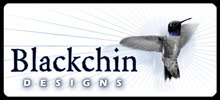The Least Tern breeding season is over, and Glenn and I have completed our minor role in sheparding the next generation of yappy little dive-bombers into adulthood. I'll miss those mornings on the beach, watching the little chicks grow into fledglings, and the fledglings learning the hunting and flying skills of adults. What I'll miss less is the behavior of human adults and their often less-than-sympathetic attitudes towards sharing the beach with any creature that doesn't surf. Grrr.
So on Saturday morning, instead of the cool of the beach, we faced down the heat and humidity of Laguna Niguel Regional Park (or, as the synthesized voice on Glenn's GPS unit inexplicably calls it, "Laguna Niguel Regional Pennsylvania". Huh?). Because of the heat, Glenn didn't feel like carrying his camera and big lens very far, so we stayed near the bottom of the park and birded the fenced-off area near the tennis courts.
Our little zone did not disappoint: it was very birdy. Among our sightings: Wilsons' Warblers, Warbling Vireos, Nutmeg Mannikins, a Nuttall's Woodpecker, and a large number of female/immature Bullock's Orioles. I'm sure there was a lot more in there to be ferreted out, as evidenced by Robert McNab's post on
OC Birding on his Sunday trip to LNRP—he clearly knows a lot more about birds than I do. I definitely want to get back and spend more time there.
On Saturday afternoon, we returned to Bolsa Chica, in large part because it's by the sea, and thus cooler than inland locales. Unfortunately, every beach-goer in OC got the same idea, and we arrived at the parking lot by the footbridge only to find it completely occupied by carloads of people toting beach towels, coolers, and boogie boards (despite the "No Beach Parking" signs prominently displayed.)
So we headed instead to our much-less-convenient secret parking spot (no, I'm not saying where it is), cut down Wintersburg Channel (okay, that's your only hint) and set off.
At the tidegates, about half a dozen Black Skimmers were gliding over the water, and a number of Elegant, Caspian, and Forster's Terns were busy hunting. The water was high and clear, and we could see small sharks and skates, as well as huge schools of fish of various sizes, swimming right at the water's edge. It reminded me that it's about time I took a scuba refresher course.
Our most notable sighting at Bolsa Chica was a female Red-breasted Merganser swimming by the tidegates. We see them there regularly during the winter, but this was the first time I've seen one there during the summer.

We stayed late, since Glenn wanted to take photos of the terns and skimmers at sunset. While he shot away, I wandered down Wintersburg Channel to look for sandpipers. We had decided not to chase the Buff-breasted Sandpiper (for some reason, I felt pessimistic about our chances of seeing it, and Glenn hates shooting at Harriet Wieder Park), but I wanted to see something other than terns and Mallards. In the marshy area west of the channel, I spotted several Lesser Yellowlegs, Western Sandpipers, Black-bellied Plovers, and Semipalmated Plovers.
We were racing against the dark as we headed back to our car. As we strode down the path along the channel, we saw a flock of Canada Geese fly down and land in the lagoon across the channel from us. In the bean field, we saw a very bold coyote who didn't seem to mind as Glenn took numerous flash photos of him.
By time we got home, it was already 8:30 p.m.
Sunday morning was occupied by work-related stuff (for me), so no birding until late afternoon. We went to Crystal Cove, where we spotted a Roadrunner on the path in front of us, on the bluff right by our parking area. It took off just before Glenn could get a shot of it. On the beach, we saw Black Turnstones, Ruddy Turnstones, Black-bellied Plovers, Willets, and California, Western, and Heerman's Gulls.
Nothing mind-blowing, but a day at the beach is never anything to complain about.













